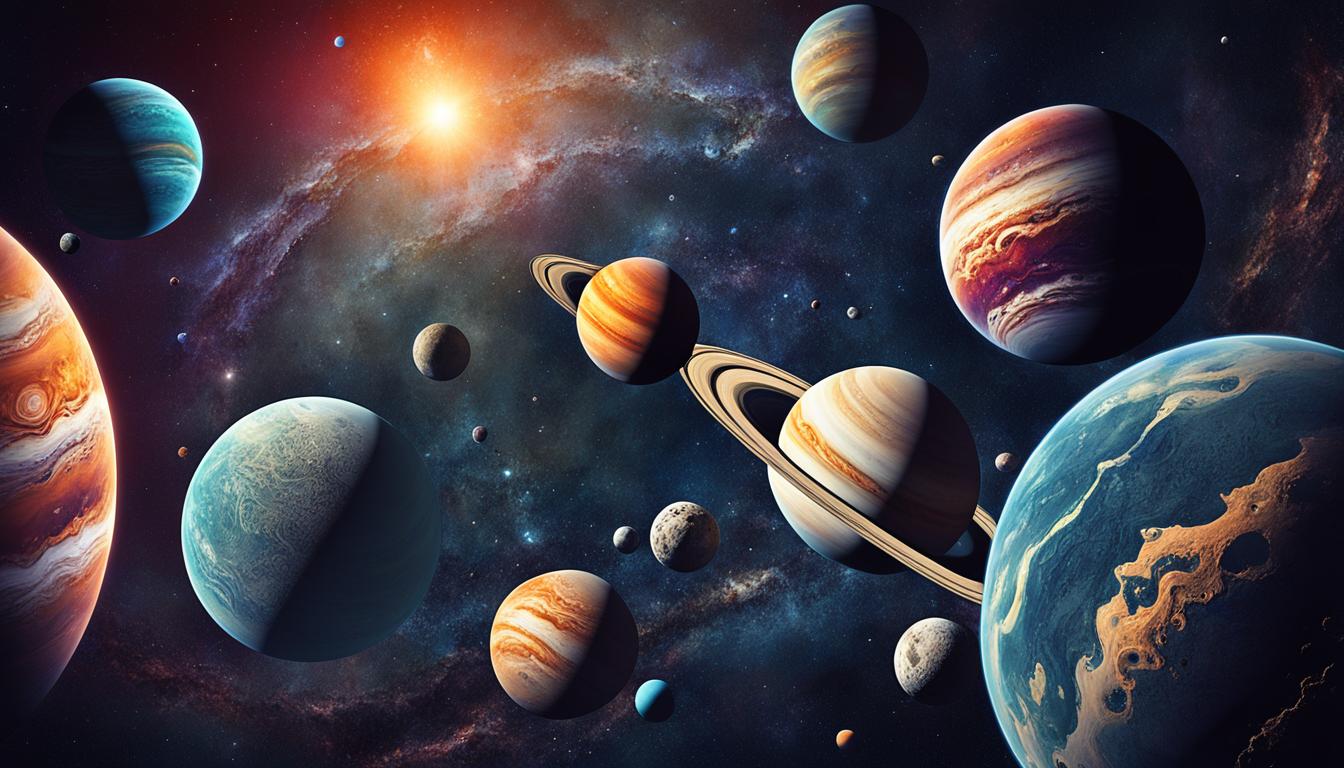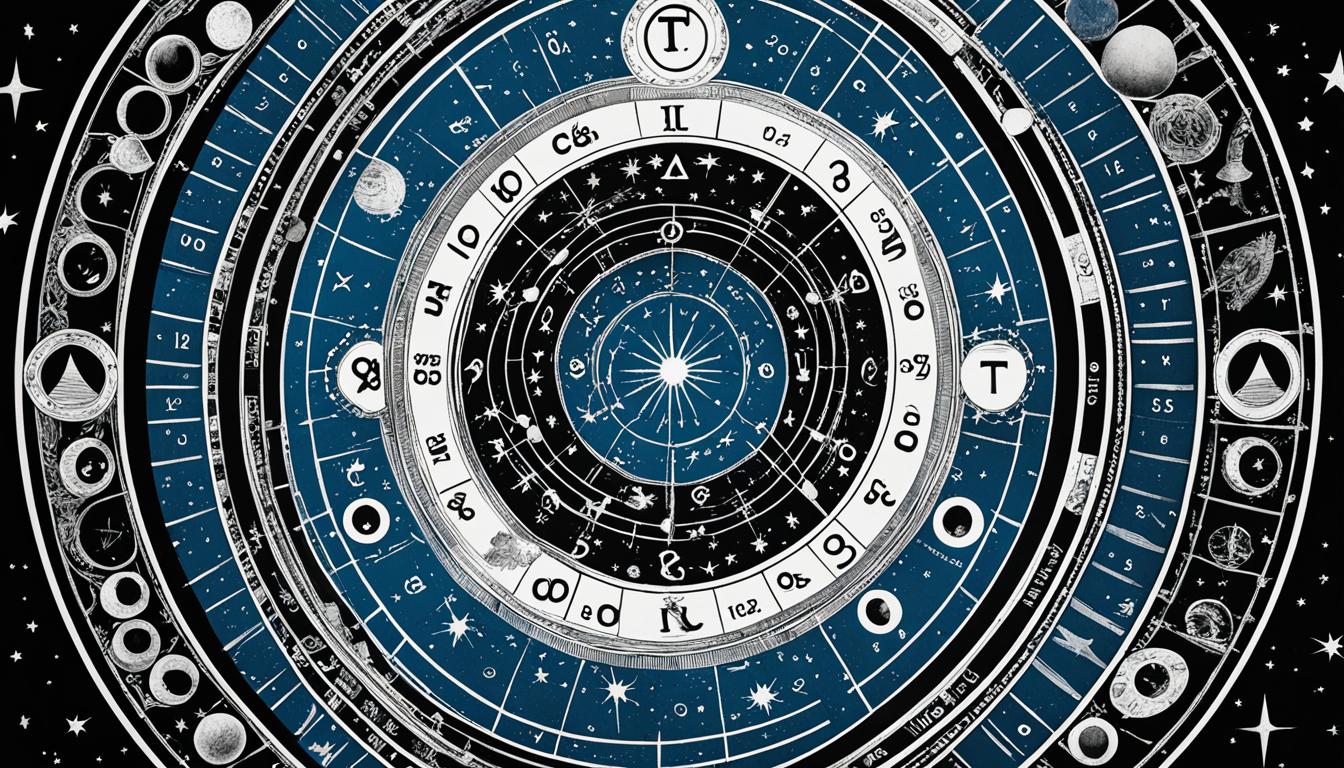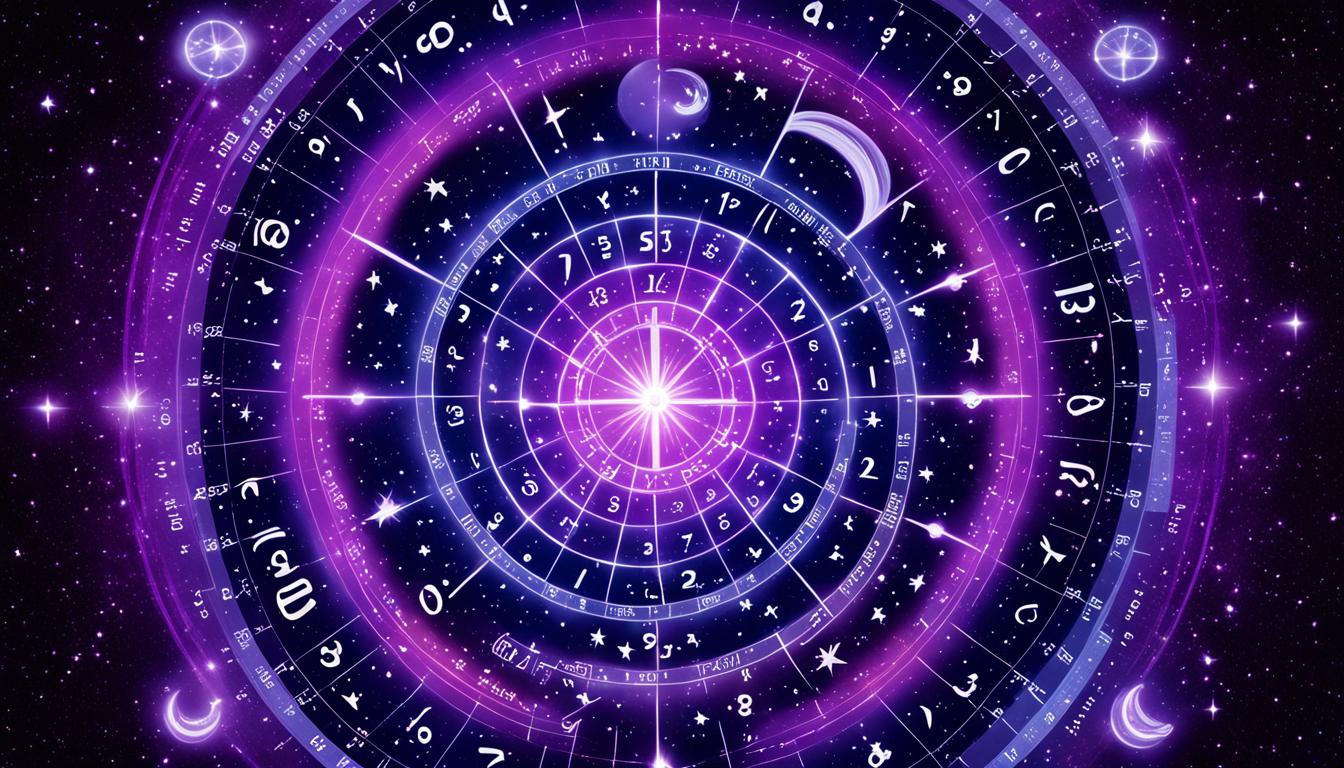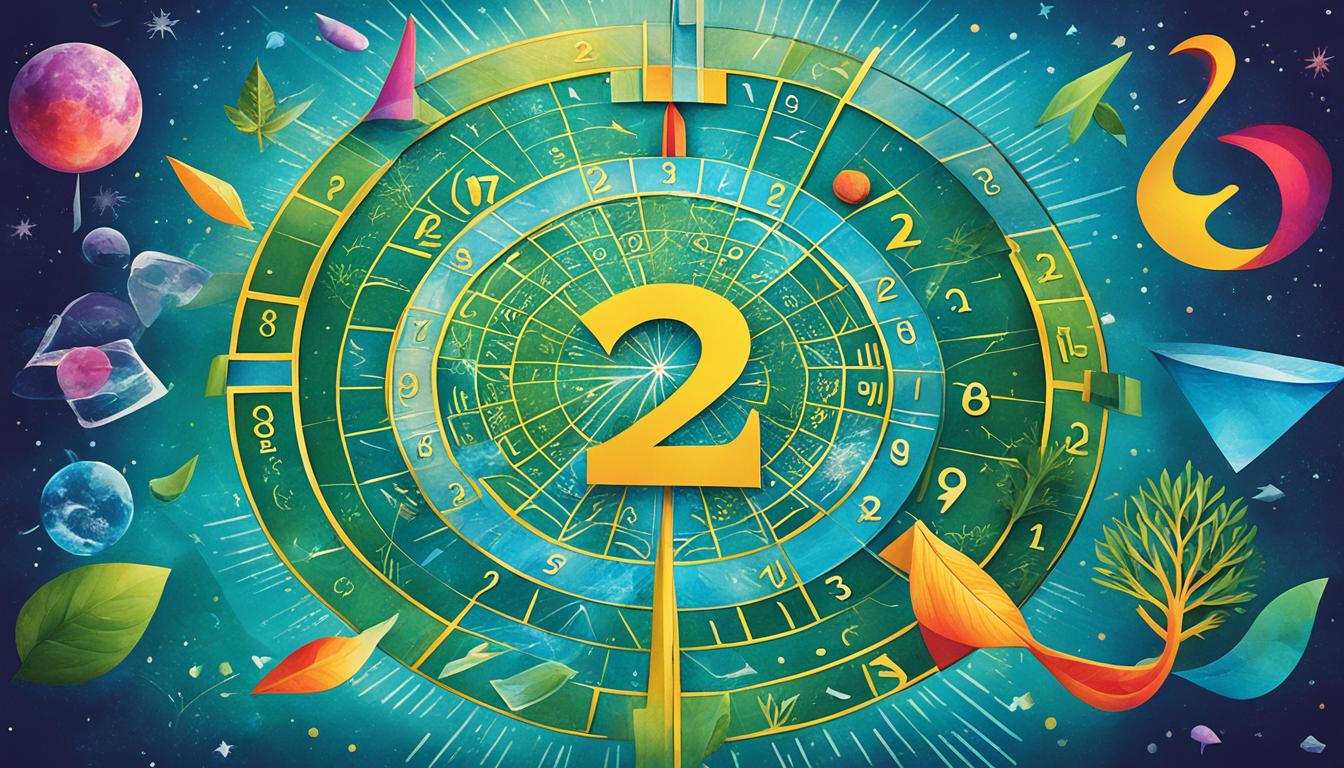Ever wondered how studying small space objects can answer big universe questions? Meet Dante Lauretta, a scientist at the University of Arizona. He has spent 16 years studying an asteroid called 101955 Bennu. Through him, we’re learning about the universe’s birth from collecting asteroid samples. Discover the importance of asteroid research with us on this space science journey.
Key Takeaways:
- Scientists are using small celestial objects like asteroids to gain insights into the formation of planets and the possibility of life.
- Studying asteroids is crucial for designing defenses against potential Earth impacts.
- Missions like OSIRIS-REx and Hayabusa2 have successfully collected samples from asteroids to study their compositions and origins.
- Exploring asteroids helps expand our understanding of the universe and its origins.
- Unlocking the secrets of planetary astronomy can have significant implications for the search for habitable worlds beyond our solar system.
Exploring the Universe’s Earliest Stars
Astronomical finds always fascinate scientists. They study the universe’s first stars with great interest. By using radio signals, they detect ancient stars’ marks. These discoveries help us understand how the universe began.
Scientists find unexpected info in signals from the early stars. They think these stars might have influenced dark matter. This study offers new paths to mystery and expands our cosmic knowledge.
Studying the first stars helps scientists look for life on other planets. They learn about star formation and what conditions suit life. This info is key to finding other habitable places and knowing more about space.
“The study of these early stars helps expand our understanding of the universe and its origins.”
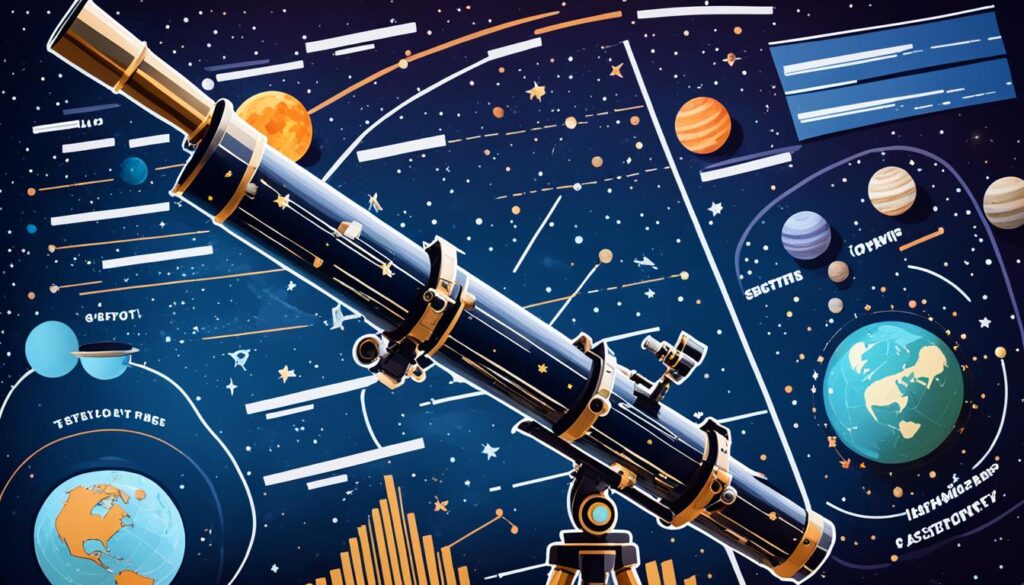
Discovering the first stars keeps astronomy thrilling. Each find grows our knowledge of space. It shows us the amazing things the universe holds.
NASA’s New Discoveries in Planetary Science
NASA keeps exploring space, finding new things. They have picked four big missions. These missions will help us learn more about planets and the universe.
DAVINCI+: Unraveling Venus’s Atmosphere
DAVINCI+ will look at Venus’s air. This will teach us how it started and changed. We will learn about Venus’s past and if it can have life. This helps us understand early planets and where life might exist.
IVO: Unveiling the Mysteries of Io
The IVO mission is going to Jupiter’s moon Io. This moon is active with volcanoes and strong tides. Scientists will see how these forces affect the moon. Understanding this can tell us more about how planets change over time.
Trident: Probing the Mysteries of Triton
Trident will explore Neptune’s big moon Triton. It has ice volcanoes and an atmosphere. Studying Triton will give us clues about other places that might have life in our solar system. This mission adds to our space knowledge.
VERITAS: Mapping Venus’s Geologic History
VERITAS will change what we know about Venus. It will map Venus’s surface. This will tell us about its rocks and activity. The mission will compare Venus to Earth. It will reveal secrets about both planets. This helps us understand our solar system better.
These missions show NASA’s dedication to learning more about space. By studying planets like Venus and moons like Io and Triton, scientists hope to make big discoveries. These missions aim to change how we look at space and what we know about it.
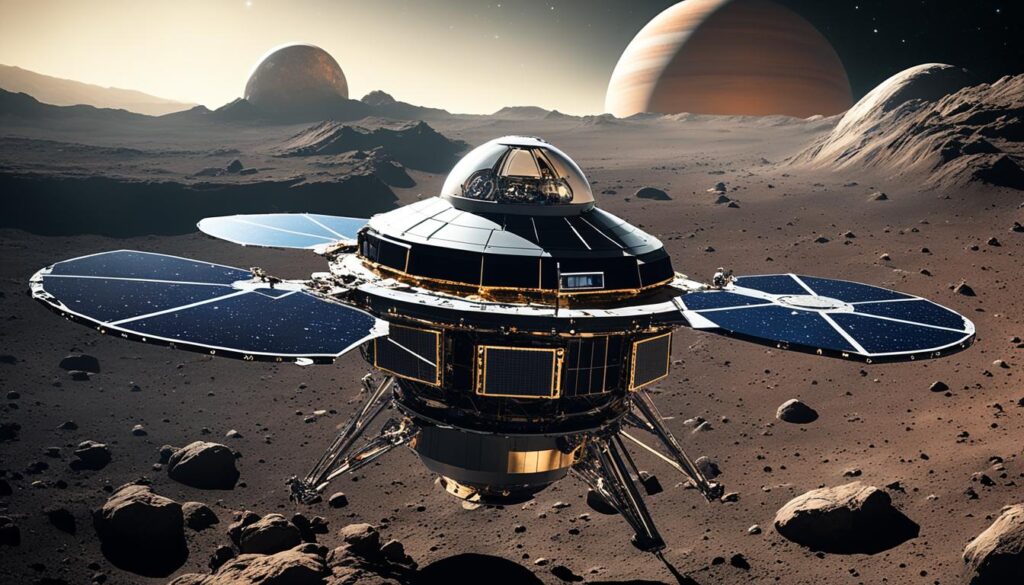
| Mission | Target | Scientific Focus |
|---|---|---|
| DAVINCI+ | Venus | Atmospheric study and understanding of formation and evolution |
| IVO | Jupiter’s Moon Io | Investigating tidal forces and volcanic activity |
| Trident | Neptune’s Moon Triton | Exploring potential habitable worlds in the distant solar system |
| VERITAS | Venus | Mapping the geologic history and comparing it with Earth |
The Significance of Small Bodies in Planetary Science
Small bodies in space, like asteroids and comets, are key for planetary astronomy and science. They help us see how planets began and changed over time. By studying these small bodies, we learn about planet birth, find Earth impact risks, and more about our solar system.
By keeping track of and getting close to these celestial bodies, scientists get a better look at our beginnings. They check what asteroids and comets are made of to learn about planet ingredients and our Earth’s history. This knowing helps us learn more about planets and is super for any space travels and outer space research.
An important mission is OSIRIS-REx by NASA, visiting asteroid Bennu to bring back a sample. This will be a big deal for understanding how planets are made and if there’s life out there. Also, it teaches us how to protect Earth from big space rocks.
Sampling small bodies helps us see the original parts and steps of making our solar system. It’s like a time machine to learn how planets and maybe life started.
Exploring the Diversity of Small Celestial Bodies
There’s a wide range of small bodies in space, from freezing comets to rocky asteroids. Each kind gives important clues about space’s big story. Looking at their bits and pieces, scientists explain how planets first formed and changed.
| Bodies | Description |
|---|---|
| Asteroids | Rocky leftovers from the early solar system, key parts for making planets. |
| Comets | Frozen masses from far away parts of the solar system. They show where water comes from and about planet starts. |
| Kuiper Belt Objects | Frozen and far objects, giving hints on our solar system’s story. |
| Oort Cloud | A big idea of icy things around us, starting long-period comets. It’s like where comets come from. |
Studying these bodies helps us understand our solar system’s long history. It’s about learning what makes places livable and knowing more about the big, wide space.
Learning about small space bodies helps us know where we come from and protect our planet. By keeping an eye on dangerous things in space, scientists can make plans to keep us safe from space dangers.
So, exploring small bodies through planetary astronomy and science is very important. It shows us how planets start, tells our story in space, and keeps Earth safe. With more study and adventure, scientists are making fantastic discoveries about our universe.
Conclusion
Planetary astronomy and science keep growing our universe knowledge. They focus on stars, planets, systems, and more. Scientists, through missions like OSIRIS-REx and Hayabusa2, unveil cosmic secrets. They aim to know more with missions like DAVINCI+, IVO, and others. This work lets us understand space more.
Scientists look at tiny things to learn about planet beginnings. Looking at early stars, they find hints on how the universe started. This also helps see if other planets could have life. Traveling to different places in space helps us learn about our planet’s story.
With every find, our universe understanding grows. This field will keep making us want to know more. As we learn, our news in space science will tell us amazing things. These stories will keep us all excited about space and the future.
FAQ
How are small celestial objects used to answer big questions about the universe?
Scientists look at tiny celestial objects like asteroids and comets. They learn about how planets form and change. They study the solar system’s materials and watch out for dangers to Earth.
What are scientists learning from the study of early stars?
Scientists use radio signals to find the secrets of early stars. This tells us how they began and changed. It makes us know more about the universe and if we can live on other planets.
What are some of NASA’s new discoveries in planetary science?
NASA is planning four new missions to explore further. These include missions to Venus, Jupiter’s moon Io, Neptune’s moon Triton, and to map Venus. They could change what we know about planets and moons in our solar system.
Why are small bodies important in planetary science?
Small celestial objects, like asteroids and comets, are key to learning about planet birth. They offer clues to the solar system’s early days and warn about Earth dangers. Studying them helps us understand where we come from and guard our planet.
How does planetary astronomy and science push the boundaries of our knowledge?
Planetary science explores the skies and distant worlds. This journey brings new discoveries that teach us more about our universe and where we fit it
